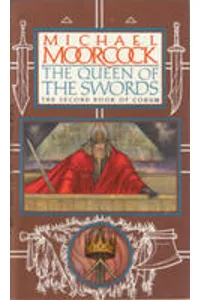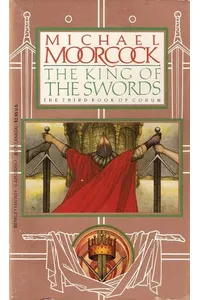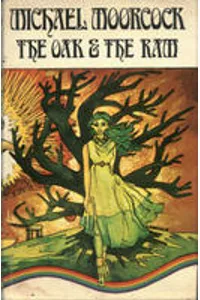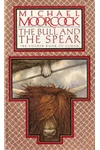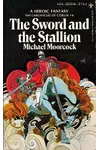Venture into the mesmerizing multiverse of the Chronicles of Corum, where a tragic hero battles gods and fate in a whirlwind of sword-and-sorcery adventure! Written by Michael Moorcock, this six-book fantasy series follows Corum Jhaelen Irsei, the last of the Vadhagh race and an incarnation of the Eternal Champion, as he navigates a world torn by Chaos and Law. With its blend of Celtic mythology, psychedelic imagery, and existential themes, this series is a gem for fantasy fans craving something bold and bittersweet.
Unlike sprawling epics, the Chronicles of Corum delivers tight, action-packed tales that weave tragedy and triumph. Ready to meet a prince with a silver hand who defies destiny? Let’s dive into this classic of 20th-century fantasy!
How Chronicles of Corum Began
In the early 1970s, Michael Moorcock, a titan of fantasy and science fiction, was already famous for his Elric saga. Inspired by Celtic and Cornish mythology, he created Corum to explore new facets of his Eternal Champion concept—a soul reborn across universes to maintain cosmic balance. The first trilogy, known as The Swords Trilogy, hit shelves in 1971, followed by The Silver Hand Trilogy in 1973–1974. Moorcock’s knack for blending mythic archetypes with 1960s counterculture vibes gave Corum’s world a unique, vibrant edge.
Moorcock’s fast-paced writing style and disdain for Tolkien-esque tropes set the series apart. He crafted Corum’s tale as a lean, emotionally charged journey, drawing from his love of pulp adventure and Jungian philosophy. The result? A series that feels both timeless and rebellious.
The Heart of Chronicles of Corum
The Chronicles of Corum spans two trilogies. The Swords Trilogy begins with The Knight of the Swords (1971), where Corum, the last Vadhagh, seeks revenge after humans slaughter his family. Mutilated and gifted the Hand of Kwll and Eye of Rhynn—dark artifacts—he battles Arioch, a Chaos Lord. The Queen of the Swords and The King of the Swords follow, pitting Corum against Xiombarg and Mabelrode, culminating in a cosmic showdown that frees humanity from divine control.
The Silver Hand Trilogy, starting with The Bull and the Spear (1973), sees an older Corum summoned to a future where the Mabden face the Fhoi Myore, icy giants. In The Oak and the Ram and The Sword and the Stallion, he wields mythic weapons like the Spear Bryionak, but tragedy looms. Themes of fate, sacrifice, and the clash between order and chaos dominate, set in a vivid multiverse steeped in Celtic lore. Moorcock’s prose, while sometimes workmanlike, paints haunting landscapes and delivers gut-punch twists, like betrayals and doomed loves.
The series’ style is gritty yet poetic, with Corum evolving from a vengeful scholar to a battle-hardened survivor. Fans praise its compact storytelling and dark, ironic tone, though some note its lighter character depth compared to modern fantasy.
Why Chronicles of Corum Resonates
The Chronicles of Corum won August Derleth Awards for The Knight of the Swords (1972) and The King of the Swords (1973), cementing Moorcock’s influence on sword-and-sorcery. Its blend of mythic resonance and anti-heroic grit inspired later grimdark authors. Fans on platforms like Goodreads and Reddit celebrate its Celtic flavor and emotional weight, with the second trilogy’s tragic ending often called “poetically devastating.” Comic adaptations and role-playing supplements further extended its reach.
Today, Corum endures as a cult classic, appealing to readers who love compact, imaginative tales over doorstopper epics. Its exploration of free will and cosmic balance feels as relevant as ever, making it a must-read for fantasy purists.
- Publication Years: 1971 (Swords Trilogy), 1973–1974 (Silver Hand Trilogy)
- Number of Books: Six
- Awards: August Derleth Awards (1972, 1973)
- Genre: Sword-and-Sorcery Fantasy
Grab The Knight of the Swords and plunge into Corum’s wild, tragic world of gods, monsters, and multiversal mayhem!

